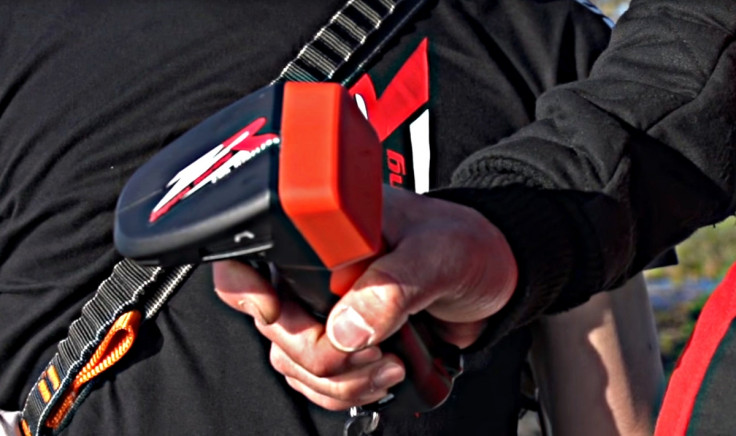Flyboard Air: Franky Zapata develops his own jet-powered flying hoverboard that actually works
French jet ski champion Franky Zapata has joined the race to build the first commercially viable hoverboard, unveiling a test flight of a new jet-powered flying propeller device.
The Flyboard Air, which took four years to develop, can reach heights of up to 10,000ft and hit a top speed of 95mph – but its onboard batteries contain only enough power for a 10-minute-long flight. Very few details have been released by Zapata Racing, but the video shows Zapata pressing a joystick wired to the base in order to control the direction, height and speed of the hoverboard, which is powered by jet engine propulsion.

Zapata is already known for his Flyboard Pro jet platform, which is tethered to a jet ski and provides enough thrust to propel users up to 30ft in the air on a jet of water to perform acrobatic stunts. The firm also has a Jetpack product that lets users fly safely over water, so it is not much of a stretch for Zapata to go into hoverboards.
Interestingly, the Flyboard Air's design bears a similarity to the Omni Hoverboard invented by Canadian Catalin Alexandru Duru. The Omni broke the Guinness World Record for longest distance travelled by a hoverboard in May 2015, when it flew a distance of 905ft at a height of 16ft in the air, in just 90 seconds.
Duru's invention features eight propellers and a frame made from carbon fibre, with motors powered by 12 lithium polymer batteries, and it too is controlled by a joystick, although it can only fly for 90 seconds.
Who will win the hoverboard race?
Besides Duru and Zapata's inventions, in the hoverboard category there's also the crowdfunded Hendo Hoverboard and the Lexus Hoverboard, but they work in a very different way. Neither of those designs go very far off the ground.
The Hendo works by magnetics and can only be used in a special purpose-built conductive rink, while the Lexus uses superconductors and magnets that work against gravity to lift the board, as liquid nitrogen cools the superconductors, giving off steam on both sides of the board.
In contrast, since Duru's hoverboard is still at the bare-bones prototype stage, Zapata's Flyboard Air, which looks like a polished product, could make it to market first and beat out all the existing hoverboards currently competing today.
However, although Zapata Racing says that its hoverboard can go up to 10,000 ft, the video only shows a test flight travelling at 55km/h for 3 and a half minutes, and we don't know how high up into the air Zapata went, so it's possible Duru's invention might be more advanced.
The firm says its prototype is still pending legislative approval for the government, so we won't be seeing it on the market for a while. Many more test flights will be needed to ensure that it is safe for users, as well as to prove its lofty claims.
© Copyright IBTimes 2025. All rights reserved.






















